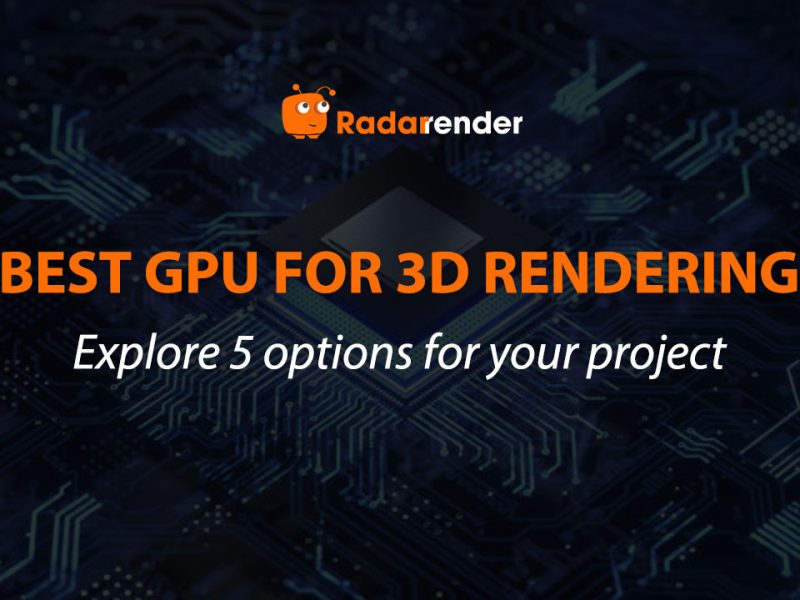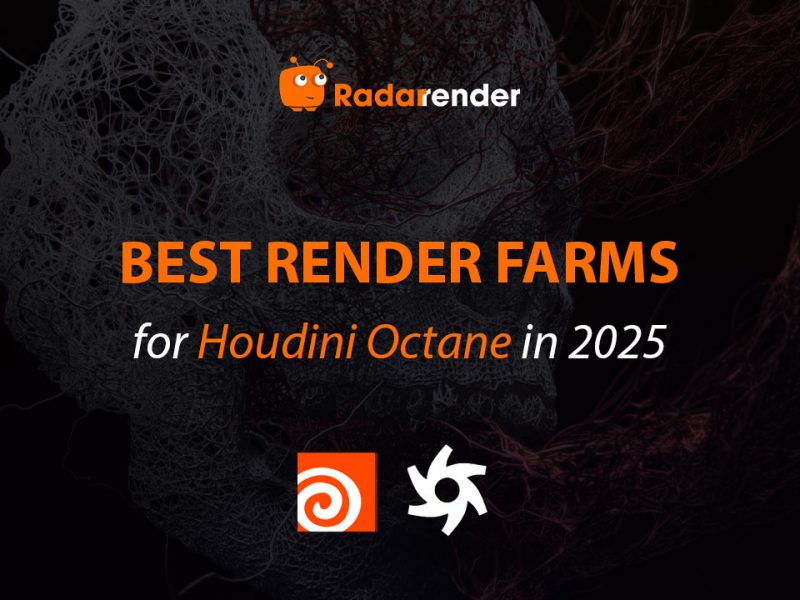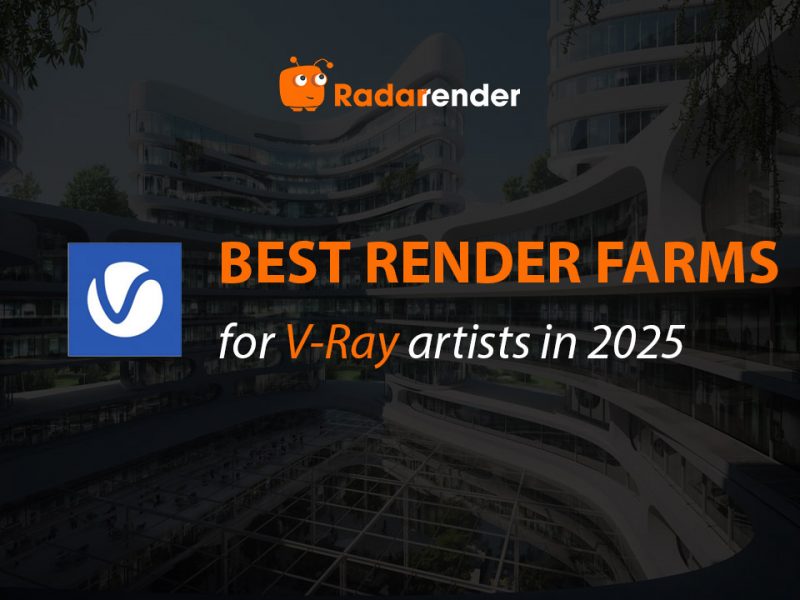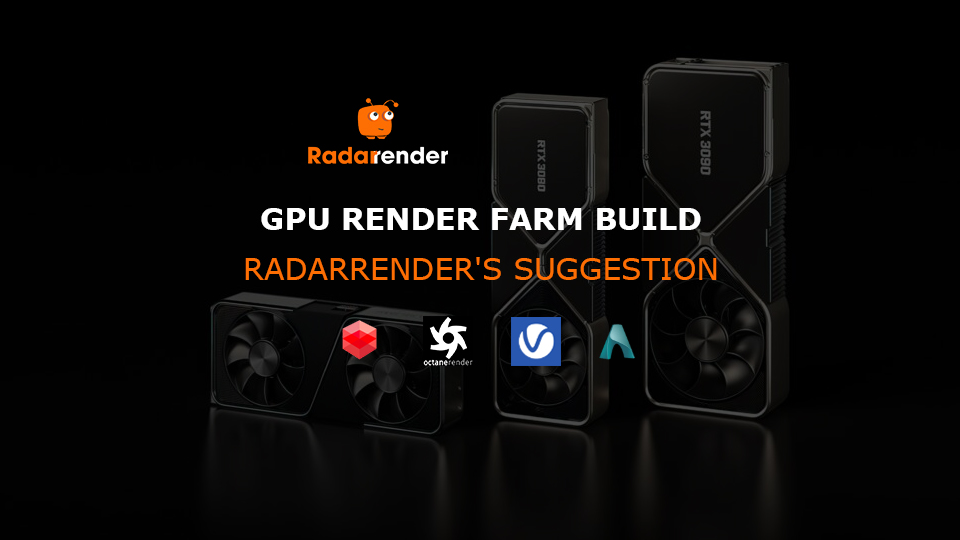
GPU Render Farm build – Radarrender’s Suggestion
Quite a few artists have been wondering if they should make their own GPU render farm build. They either don’t know how to build one or still wonder if a render farm is worth it.
That’s why, today, Radarrender will explain in detail about GPU render farm build. Why and how to build a GPU render farm. Also, we give some other options instead of building GPU render farm by yourself. It is optimized for GPU-based rendering applications such as Redshift, Octane, Vray GPU, Arnold GPU, Blender Cycles, Iray, and more.
GPU render farm – What is it and How does it work?
What is a GPU render farm?
For 3D artists, the word “render farm” is no stranger. I think we all know what it is – or at least the advantage of it. Render farm makes the rendering process very much faster. But do you know where the term “render farm” originates from?
In July 1990, Autodesk 3D Studio had to meet an unrealistic deadline when making the animated short The Bored Room. 386 computers were put into a room and configured to do the rendering. At that time, they were not networked so each computer needed to be set up to render a specific animation sequence manually. The technician harvested the rendered frames, like a farmer harvesting his crops. So they named the system of computers a render farm.
The term has been used widely since then. In short, a render farm is a high-performance computer system built to render CGI (computer-generated imagery) for Animation, VFX, Architectural visualizations, and much more. It consists of several individual computers that are connected through a network connection.
And GPU render farm is a render farm that is built for GPU rendering.
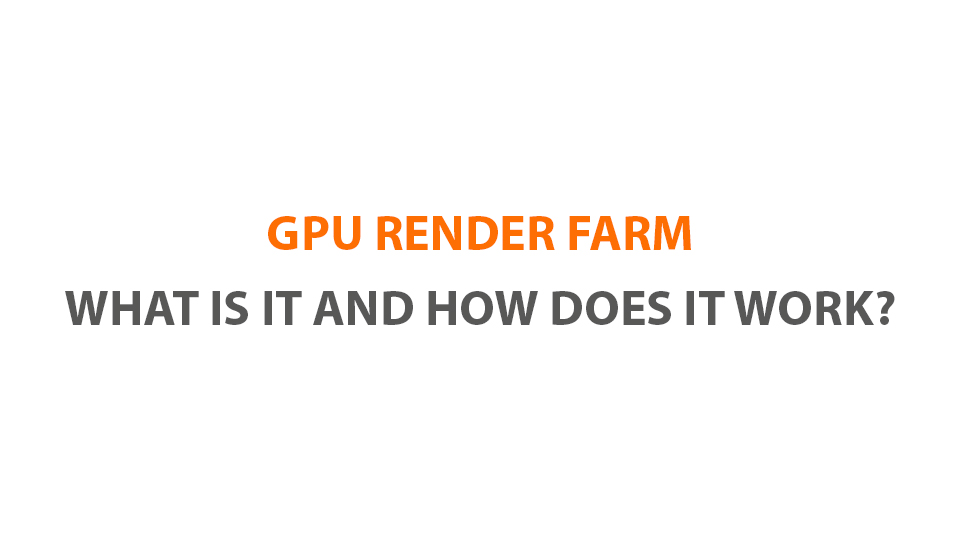 How does a GPU render farm work?
How does a GPU render farm work?
With the power of GPU render farms, your 3D projects which take days, weeks, or more to finish, are now complete in just a few hours. Amazing, isn’t it. Do you ever wonder how they can do it?
Here how:
A GPU render farm has one Render manager and many Render nodes. A big GPU render farm could have hundreds or even thousands of Render nodes. Each Render node is an individual computer that has all the required 3D software, render engines and plugins installed. It will listen to orders from the Render manager to process the jobs. In addition, the render nodes’ hardware is optimized for GPU rendering.
Then what is a Render manager? It is software managing the rendering and processing tasks. Render manager also runs on a computer in render farm. As render nodes and render manager are connected to the same LAN network (in some cases, over the Internet), they are able to talk to each other. Render manager will distribute the scenes among render nodes, and assign them different tasks.
A popular render manager is Thinkbox Deadline. However, now a bunch of 3D software has its own network rendering feature, without the need to use a third-party manager.
To sum up, this is the workflow. First, you finish preparing a project in 3D software (Cinema 4D, Houdini, Blender, etc). Next, send the scenes to the render manager. The render manager takes the scenes and sends them to render nodes. Later, render nodes will receive the scenes and process the tasks. When the jobs are done, render nodes send the result back to the render manager.
That way, a GPU render farm is capable of speeding up the render several times, by splitting a project into small tasks and processing them in parallel.
Why need to build GPU render farm?
Animation, VFX Studios or Agencies usually have their own render farm. This is because a render farm brings so many benefits to artists’ projects and workflow. Pixar, for example, has a huge render farm, which is composed of 2000 machines.
So, what benefits does building GPU render farm give you?
Save time
From the previous section, we understand that a GPU render farm will split heavy workloads and offload them to the render nodes. Let’s say you have a 100-frame animation that needs rendering. 1 frame takes 1 hour to render on your single PC, then a whole animation will need 100 hours (over 4 days). But if you render on 10 nodes, the render time will be 10 hours. 100 nodes will only render in just 1 hour.
A GPU render farm not only helps artists to render faster but also frees up the PC. Instead of waiting and wasting time, thanks to the render farm, we are able to continue to work on other projects, or take a break. As a result, artists can focus on what they are best at – being creative.
Save cost
It is true that building a GPU render farm is expensive, but worth investing in. A render node can take from $1000 to unlimited depending on the hardware. Let’s take one as an example.
- AMD Ryzen 7 7700X
- 2x NVIDIA GeForce RTX 3070 Ti
- 64GB DDR5
A render node consisting of those above is around $5200. Note: we have not taken software license, electricity bill, etc into consideration.
So how long does it take for you to make up for the initial cost? It depends. Theoretically, if you earn about $1000 per project, 5 projects will pay for the new render node. From the following projects, you can make a profit. You know what’s more. A render node can be used for around 5 years or longer. So if you are an artist, and earn money from your creative work, building a GPU render farm is definitely a good investment.
Further, the fast rendering helps you to get fast client feedback and turnaround times. This way, you will get more clients and make more money.
Control
Thanks to quick renders of GPU render farm, you have more time to work on, improve the quality of projects. Instead of optimizing the scene, reduce the quality to deliver the render on deadline.
Change small details in the scene and re-render whenever you or your clients feel necessary. Preview the work more often, do more revisions to refine the final render to look as awesome as it deserves to.
Overall, GPU Render Farm build is a wise investment for creators who need extra power for everyday jobs.
How to build a GPU render farm – Radarrender’s Suggestion
Owning a GPU Render Farm build for yourself bring many pros to your work and pipeline. Let’s see what you will need for actually building one.
Hardware for building a GPU render farm
CPU
In a GPU render farm, CPU should have the highest clock speed in order to get the best performance of render nodes. Even though your GPUs handle most of the hard work during rendering, CPU is still in charge of some tasks that GPUs are unable to perform.
The other reason is that GPUs typically depend on these CPU tasks. CPU must finish them quickly so that the GPUs may carry on rendering.
GPU
Of course, GPU is the most important part of a GPU render node. Finding the right GPU for your GPU render farm is to consider and balance between the following factors. The number of GPUs, the amount of VRAM you want/need and your budget.
In fact, most GPU render engines make use of NVIDIA CUDA Technology so Radarrender recommends you buy NVIDIA GPU for your GPU render farm build. Currently, the flagship of NVIDIA GPU is RTX 4090. It delivers crazy fast render performance, almost doubles that of RTX 3090Ti – the last and most powerful GPU of the RTX 30 series.
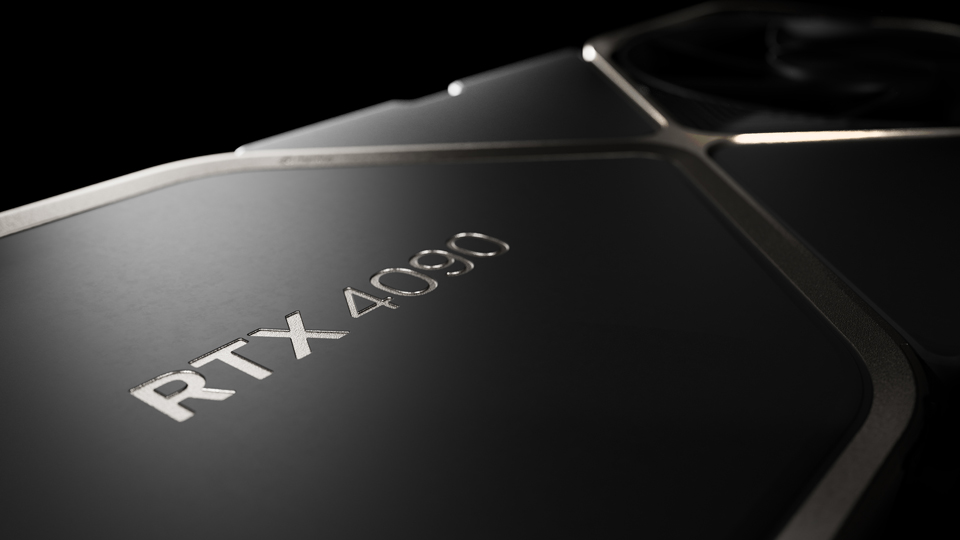 Image: NVIDIA
Image: NVIDIA
You still can choose AMD GPU in case you only render in AMD-supporting Renderers, for example, Blender Cycles or ProRender.
In addition, the render performance will scale almost linearly with each additional GPU. That’s why to maximize the performance of GPU render nodes, we should aim for a multi-GPU configuration.
RAM
The amount of RAM you need depends on the complexity of your scenes. It is used when you have to render out-of-core. Because if a GPU runs out of VRAM (because of too many polygons or textures in the scene), the software will use the system’s memory – RAM instead. Most of the time, 32GB to 64GB of RAM is enogh. Just in rare cases, you will need to expand that to RAM 128GB on render node.
Other components
There are a few other components you also need
- Hard drive: SSD drive.
- Motherboard: to fit your choice of GPU(s) and CPU.
- Cooling: to keep your GPU render farm from overheating.
- PSU: strong enough to provide power for your GPU render farm.
- Case: to fit all components you intend to purchase.
Software license for GPU Render Farm build
As soon as the hardware is ready, you have to install the software. Render farm management software on Master node, software packages on all Slave nodes (render nodes). So that they are able to run and render.
Many software license includes additional licenses for network rendering/running in a render farm. But there are cases you have to purchase additional licenses for installing on render nodes.
Render Farm Management Software
Currently, most render farms use AWS Thinkbox Deadline as a render farm manager because it supports the most diverse DCCs in the industry. In 2022, Deadline is free on up to 10 render nodes.
Other options are Pulze Render Manager, Qube from pipelineFX, OpenCue, Afanasy.
Software Packages
- 3D software: Cinema 4D, Houdini, Maya, Blender, Keyshot, 3ds Max, etc.
- Render engines: Redshift, Octane, V-ray GPU, Arnold GPU, Iray, Maxwell, Cycles, etc.
- Plugins: X-Particles, TurbulenceFD, FumeFX, Realflow, Tyflow, MOPS, Axiom, etc.
Online render farms – An alternative for GPU Render Farm build
In the previous section, you have gotten a general idea of how to build GPU render farm. Although, GPU render farm build is definitely worth it, setting up one is not simple at all. The initial investment is enormous (hardware, software licenses). Not only that, it takes time and effort to install and maintain a GPU render farm (internet, electricity costs, depreciation).
Overall, GPU Render Farm build seems to be suitable for artists that are more “technical”. Those have a bit of knowledge in IT, and love configuring and controlling their own thing. For those who don’t, there are several experts/providers out there to help, such as Puget Systems.
Online Render Farm is also a good choice. You simply send your projects to the online render farms and get back the results. Further, IaaS render farms (iRender, Xesktop) give you the control as if it were your own GPU render farm.
Conclusion
Building a GPU render farm seems like a complicated task, but totally worth your time and effort. To begin with, a new PC is all you need. Radarrender gives recommendations for GPU render farm build, and an alternative – online render farms if you are interested.
See more:



